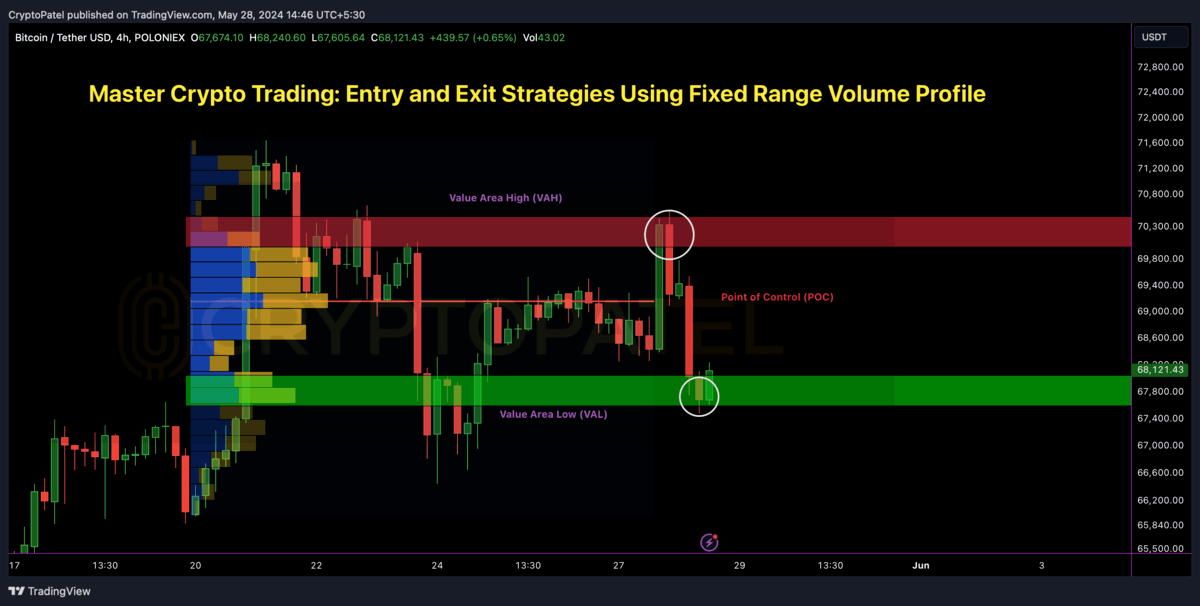Entry Strategy
 1. Identify Key Levels:**
1. Identify Key Levels:**
- Value Area High (VAH): Upper boundary with 70% volume concentration, often acting as resistance.
- Value Area Low (VAL): Lower boundary with 70% volume concentration, often acting as support.
- Point of Control (POC): Price level with highest traded volume, indicating significant interest.
2. Volume Shelves:**
- Identify areas with volume concentration, known as volume shelves. These indicate strong support or resistance zones.
3. Market Context:**
- Analyze overall market trend using higher time frames to determine trend direction (uptrend, downtrend, sideways).
4. Confirmation with Candlestick Patterns:**
- Use candlestick patterns around VAH, VAL, and POC for entry point confirmation. Look for patterns like pin bars, engulfing candles, and hammers.
5. Entry Trigger:**
- Long Positions: Enter near VAL with confirmation from bullish candlestick patterns.
- Short Positions: Enter near VAH with confirmation from bearish candlestick patterns.
- Consider entering at POC if there is strong price reaction (e.g., price bounces off POC with significant volume).
Exit Strategy
1. Target Levels:**
- Set initial targets at the next significant volume shelf.
- Use VAH and VAL as primary target levels, depending on entry direction.
- Consider POC as a mid-point target.
2. Trailing Stops:**
- Use trailing stops to lock in profits as price moves in your favor. For long positions, place stop-loss orders below VAL; for short positions, place above VAH.
3. Volume Analysis:**
- Monitor volume as price approaches target levels. Decreasing volume near targets could indicate a weakening trend, suggesting it's time to exit.
4. Price Action Signals:**
- Exit positions if you observe reversal candlestick patterns near your target levels, such as doji, shooting star, or hammer.
Example of Application
Scenario: Strong support level identified at VAL in an uptrend.
1. Entry: Place a buy order near VAL, with a stop loss just below the support level.
2. Target: Set first target at POC, second target at VAH.
3. Management: Use a trailing stop to follow the price, adjusting it below higher lows as the price moves up.


 Crypto Daily™
Crypto Daily™ BlockchainReporter
BlockchainReporter Crypto Daily™
Crypto Daily™ Crypto Daily™
Crypto Daily™ crypto.news
crypto.news CoinPedia News
CoinPedia News Cryptopolitan_News
Cryptopolitan_News Crypto Daily™
Crypto Daily™ BSCN
BSCN






















